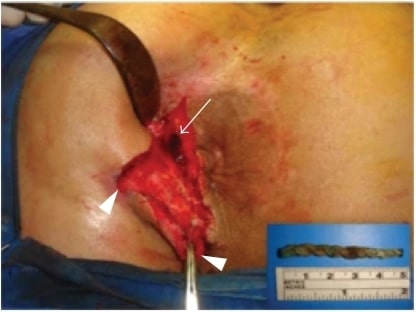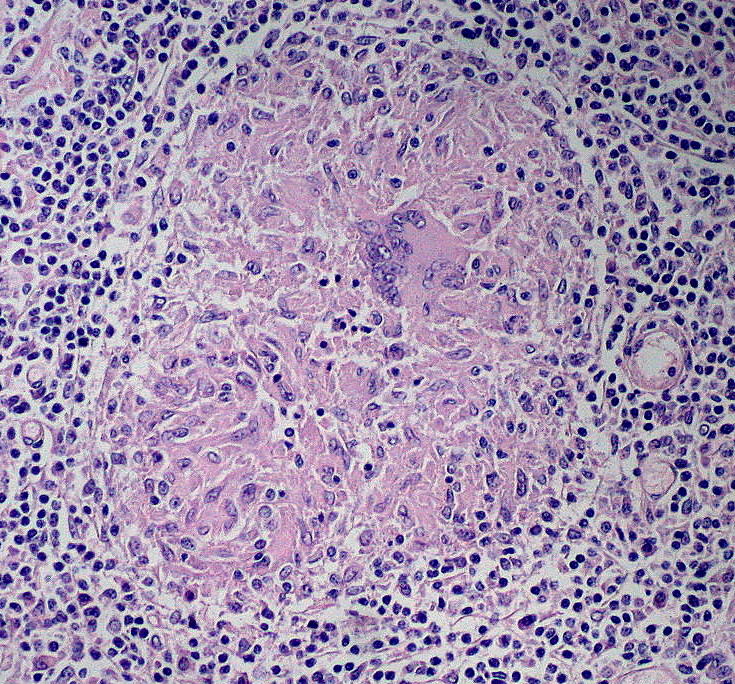Playlist
Show Playlist
Hide Playlist
Crohn's Disease
-
Slides Small and large bowel.pdf
-
Download Lecture Overview
00:01 Let´s talk about Crohn´s disease at first. 00:03 Crohn´s disease can occur anywhere through your entire GI system. 00:08 It can be in the mouth for all you know. 00:10 You can actually find aphthous ulcers. It could be in the esophagus but most commonly if you locate by the terminal ileum, that´s where you find it most commonly and therefore with Crohn´s disease oftentimes issues that you´ll be finding include megaloblastic anemia and then also steatorrhea due to improper bowel acid type of recycling or enterohepatic circulation. The signs and symptoms include weight loss, fever, the abdominal pain, arthritis. The extraintestinal manifestations that you find with Crohn´s disease include that arthritis, erythema nodosum, diarrhea and importantly, perianal disease or mouth ulcers. 00:56 Remember, I told you Crohn´s disease, it can affect you anywhere through the GI tract. 01:00 Subtle presentation: Teenage girls, a systemic onset. 01:05 Keep in mind that the extraintestinal manifestation here could be HLA-B27 type of issues. It could be Reiter's syndrome, it could be psoriatic arthritis or your ankylosing spondylitis. 01:18 Diagnosis: upper GI: thickened folds and narrowing of the distal small bowel known as your 'string sign'. Colonoscopy and biopsy. 01:35 So what you´ll do here is you´ll divide the GI system in two or really the intestine into your upper and your distal portion. 01:42 String sign will be the upper GI, whereas the lower GI upon colonoscopy and biopsy will show the following. 01:49 We have Crohn´s disease in which C as in Crohn´s will show you cobble stone appearance. Cobble stone appearance, think of maybe perhaps if this helps you, Wizard of Oz with Dorothy who is then skipping down the cobble stone. 02:05 In other words referring to skip lesions and what skip lesion refers to is the fact that there is going to be areas that are lesion, areas that are normal, areas that are lesion, areas that are normal. 02:17 You´ll never find a step of pattern but ulcerative colitis, so therefore as you go through Crohn´s, I´d like for you to compare in your head what´s also occurring in ulcerative colitis, it´s about time we come to UC, you'll be in great shape. Now, ulcerative colitis, would never begin up in the mouth. In fact, it almost always begin in the opposite end. 02:39 It will begin by the rectum and then it will move continuously and ulcerative colitis, you´ll never find skip lesions. 02:47 It is continuous proximal growth. We´ll talk about that in a little bit. 02:52 Next, in Crohn´s disease, you´ve heard the term 'transmural' and what that means is trans means all, mural means wall. 03:01 The entire wall of Crohn´s disease is affected wherever it might be in the GI tract. 03:08 Because of the entire involvement of the wall (transmural), you oftentimes, you´ll find fistulas and especially your connection from your anus and notoriously known for non-caseating type of granuloma. 03:27 Management: Steroids, anti-inflammatory such as aminosalicylates, then you have immunomodulators: azothioprine, metronidazole, cyclosporin, tacromilus and perhaps even tumor necrosis factor inhibitors, anti-TNF, such as infliximab. 03:50 For now, much more important that you pay attention to medications here, immunomodulators and anti-inflammatories, aminosalicylates. 03:57 The perianal disease that you would find with Crohn´s disease (transmural), take a look at the fistula first because there´s transmural type of involvement of your intestine. You might actually create a fistula through the wall of your rectum. 04:24 In addition, it might be anorectal ulcers, the two things that wanna keep in mind in Crohn´s that you will never find in ulcerative clients is number 1, in Crohn´s transmural involvement where as in ulcerative colitis, superficial. 04:44 In Crohn´s, you find fistulas and ulcerative colitis you will not. 04:50 In Crohn´s you have involvement of the entire GI tract from the mouth down to perhaps the anus as we´ve seeing here. 04:59 Inflammatory bowel disease if it´s the upper GI, you would expect to find that string sign that I was talking to you about earlier if you´re dealing with the small intestine and that´s the picture that we´re seeing here on a radiograph.
About the Lecture
The lecture Crohn's Disease by Carlo Raj, MD is from the course Small and Large Intestine Diseases: Basic Principles with Carlo Raj.
Included Quiz Questions
Which of the following is commonly associated with Crohn's disease?
- Cobblestone appearance
- Only mucosal involvement
- Pseudopolyps
- Primary sclerosing cholangitis
- Backwash ileitis
Which of the following is a characteristic feature of Crohn's disease?
- Presence of skip lesions in the affected gastrointestinal tract
- Continuous proximal growth starting from the rectum
- Superficial involvement of the intestinal wall
- Absence of extraintestinal manifestations like arthritis
- Development of caseating granulomas
Which of the following is NOT an extraintestinal manifestation of Crohn's disease?
- Steatorrhea
- Oral ulcers
- Erythema nodosum
- Arthritis
- Abdominal pain due to gallstones
Which of the following medical lines of typical treatment is NOT useful in Crohn's disease?
- Azithromycin
- Metronidazole
- Azathioprine
- Steroids
What sign is commonly seen on an X-ray of a patient with Crohn's disease?
- String sign
- Bird's beak sign
- Rat tail sign
- Donut sign
- Single bubble sign
Customer reviews
5,0 of 5 stars
| 5 Stars |
|
5 |
| 4 Stars |
|
0 |
| 3 Stars |
|
0 |
| 2 Stars |
|
0 |
| 1 Star |
|
0 |





